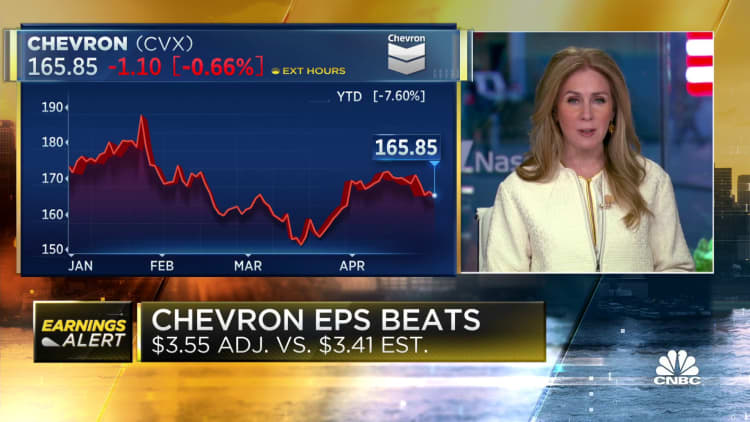
Oil major Chevron beat market expectations on Friday as profit nudged higher in the first quarter, with earnings from refining compensating for a slide in energy prices and in oil and gas production.
Net profit climbed 5% to $6.57 billion or $3.46 per share. That compares with a Wall Street consensus for flat profit at $3.38 per share, according to figures compiled by Zacks Investment Research.
The company's standout business was oil refining, where higher margins helped income surge more than five-fold to $1.8 billion.
But its oil and gas production division saw its net profit tumble 25% on a big year-over-year decline in prices.
Brent crude, the global benchmark for oil, traded at an average of $82 per barrel during the first three months of the year, down 16% from a year earlier and a drop of 7% from the fourth quarter.
"Brent prices are high, yet down quite a bit. But you are still seeing mid double-digit returns," Chief Financial Officer Pierre Breber told Reuters, referring to returns on capital employed (ROCE).
The second-largest U.S. oil firm ended the quarter with $15.8 billion in cash, down 12% from a year ago, but some $10 billion above what it needs run the business, Breber said.
Big oil companies are holding more cash in the event of an economic slowdown and to be ready if there is a new wave of consolidations.
"The intent over time is that cash will be returned to shareholders in a steady way," Breber said, adding Chevron would only pursue deals that benefit shareholders.
"We are always looking," he said when asked if Chevron was discussing acquisitions. "And we have a very high bar because we don't need to do a deal."
Capital spending jumped 55% from a year ago to $3 billion, primarily driven by investments in U.S. projects.
Chevron has been increasing production in the United States while decreasing it elsewhere. Total output fell 3% from a year ago to 2.98 million barrels of oil and gas per day on a contract expiration in Thailand and on the sale of South Texas shale properties.
The decrease was partially offset by a 4% production growth in the Permian, the largest shale basin in the U.S. The company is also started up a new platform in the Gulf of Mexico.

